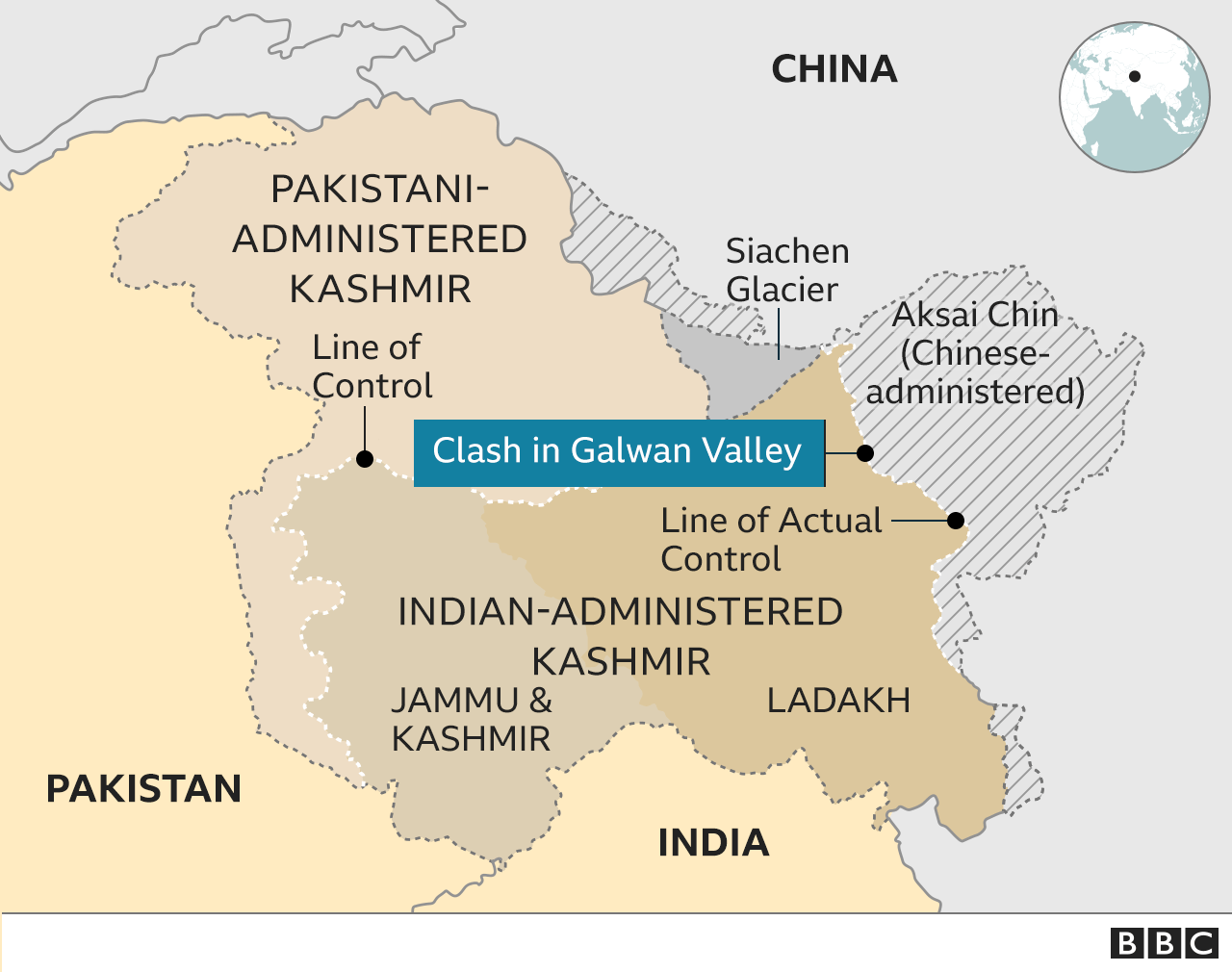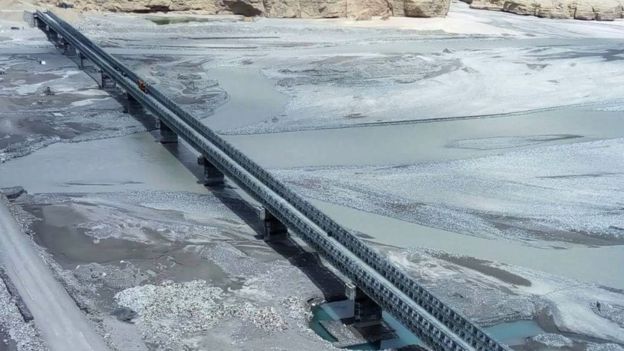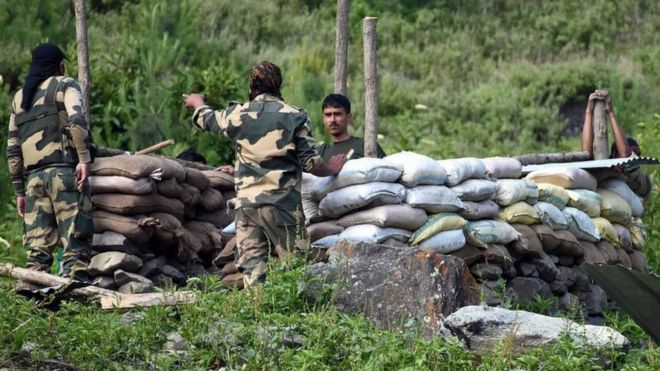At least 20 Indian soldiers were killed in a clash with Chinese forces in a disputed Himalayan border area, Indian officials say.
The incident follows rising tensions, and is the first deadly clash in the border area in at least 45 years.
The Indian army initially said three of its soldiers had been killed, adding that both sides suffered casualties.
But later on Tuesday, officials said a number of critically injured soldiers had died of their wounds.
India's external affairs ministry accused China of breaking an agreement struck the previous week to respect the Line of Actual Control (LAC) in the Galwan Valley.
BBC diplomatic correspondent James Robbins says violence between two armies high up in the Himalayas is very serious, and pressure will grow on the two nuclear powers not to allow a slide into full-scale conflict.
What have both sides said about the incident?
Early on Tuesday the Indian army said three of its soldiers, including an officer, had died in a clash in Ladakh, in the disputed Kashmir region.
Later in the day, it released a statement saying the two sides had disengaged.
It added that "17 Indian troops who were critically injured in the line of duty" and died from their injuries, taking the "total that were killed in action to 20".
China did not confirm any casualties, but accused India in turn of crossing the border onto the Chinese side.
Chinese foreign ministry spokesman Zhao Lijian said India had crossed the border twice on Monday, "provoking and attacking Chinese personnel, resulting in serious physical confrontation between border forces on the two sides", AFP news agency reported.

Both sides insist no bullet has been fired in four decades, and the Indian army said on Tuesday that "no shots were fired" in this latest skirmish.
How a clash that did not involve an exchange of fire could prove so lethal is unclear. There are reports that it was fought with rocks and clubs
Local media outlets reported that the Indian soldiers had been "beaten to death".
How tense is the area?
The LAC is poorly demarcated. The presence of rivers, lakes and snowcaps means the line can shift. The soldiers either side - representing two of the world's largest armies - come face to face at many points.
But there have been tense confrontations along the border in recent weeks.
India has accused China of sending thousands of troops into Ladakh's Galwan valley and says China occupies 38,000sq km (14,700sq miles) of its territory. Several rounds of talks in the last three decades have failed to resolve the boundary disputes.
The two countries have fought only one war so far, in 1962, when India suffered a humiliating defeat.
In May, dozens of Indian and Chinese soldiers exchanged physical blows on the border in the north-eastern state of Sikkim. And in 2017, the two countries clashed in the region after China tried to extend a border road through a disputed plateau.

There are several reasons why tensions are rising now - but competing strategic goals lie at the root, and both sides blame each other.
India has built a new road in what experts say is the most remote and vulnerable area along the LAC in Ladakh. And India's decision to ramp up infrastructure seems to have infuriated Beijing.
The road could boost Delhi's capability to move men and materiel rapidly in case of a conflict.
India also disputes part of Kashmir - an ethnically diverse Himalayan region covering about 140,000sq km - with Pakistan.
Latest Stories
-
Ghanaian comedy shows held in 2024
4 hours -
Hohoe MP-elect vows to weaken NPP’s influence ahead of future elections
4 hours -
Women of Valour heads to Paris in 2025
4 hours -
Joseph Keys releases new single ‘Yonko Pa’
5 hours -
Human rights court declares New Nation School’s treatment of students as harsh
5 hours -
Polo Beach Club defies injunction on Dec. 22; noise concerns raised
6 hours -
I wish new leaders strength to rule Ghana – Akufo-Addo
6 hours -
Joseph Paintsil reflects on a stellar debut season with LA Galaxy
6 hours -
I urge security to take firm stance against post-election violence – Akufo-Addo
7 hours -
Akufo-Addo delivers Christmas message in final yuletide address to Ghanaians
7 hours -
Onion costs shoot up as traders lament scarcity of commodity
7 hours -
Registration for MPs-elect to begin on December 25
7 hours -
EC calls for stakeholders’ support to complete electoral processes
8 hours -
Ghana Shippers Authority addresses Tema port delays, assures of efforts to resolve challenges
8 hours -
Ensign Global College recieves Presidential Charter
8 hours

